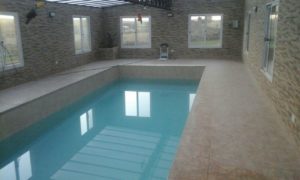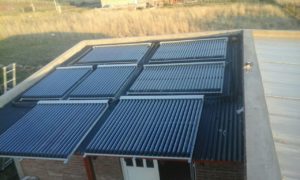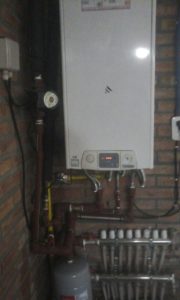When Federico Redin answered the phone call at his office in Bahia Blanca (Argentina) he was happy because it was to request their installation services in a new solar energy project.
But when he came to the house where the project would be located, he realized that the facility had some complexity.
It was a continuous use indoor pool with bathroom, dressing room and kitchen.
The pool was closed with rustic solid brick walls, aluminum DVH low quality openings in the enclosure and transparent polycarbonate roof. A challenge.

After the visit, which solution adopt to optimally configure the installation was going around in his head.
Appealing to the characteristic creativity of Argentine people, Federico took an unconventional solution: swimming pool conditioning by floor heating (in the transit zones of the enclosure and in the pool itself).
In this way it would achieve heat the pool regardless of the type of water containing the glass and more efficiently, since conventional pool heating has the negative inertia of moving water.
By heating the pool water with a conventional boiler the water is set into motion with the same pool pump, causing cooling it by this movement; which decreases the overall installation performance.
Therefore, a more powerful source of energy and more thermal reaction is needed.
We know that using solar energy do not have a large thermal reaction, ie the heating time is slower.
By heating the pool with underfloor heating water turns hot through the concrete, once in regime, it has more thermal inertia and allows solar energy to maintain that regime.
The radiant “glass” pool and the transit floor area of the enclosure receive input from a conventional gas boiler, which is responsible for putting installation in system, and 7 heat pipe collectors supplying directly fluid to the circuit (without heat exchanger) that transfers heat in sunshine.

Temperature is regulated with a mixing thermostatic valve to not degrade the soil at high temperatures.
The system has a thermostat for transit zones and a thermostat for swimming pool water.
Then room or water temperature are discriminated with electric heads located at the underfloor heating collector, separating pool and transit zones of the enclosure.
The pool has a natural salt chlorination system (salt water 5%) thus avoiding the use of chlorine.

Having 2 separate circuits (the pool and underfloor heating), we protect the boiler to heat salt water, which quickly will cause severe and irreversible damage to it.
Federico Redin is Sopelia facilities expert advisor.


















